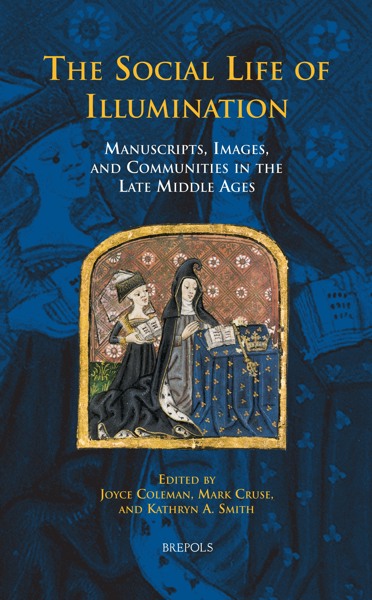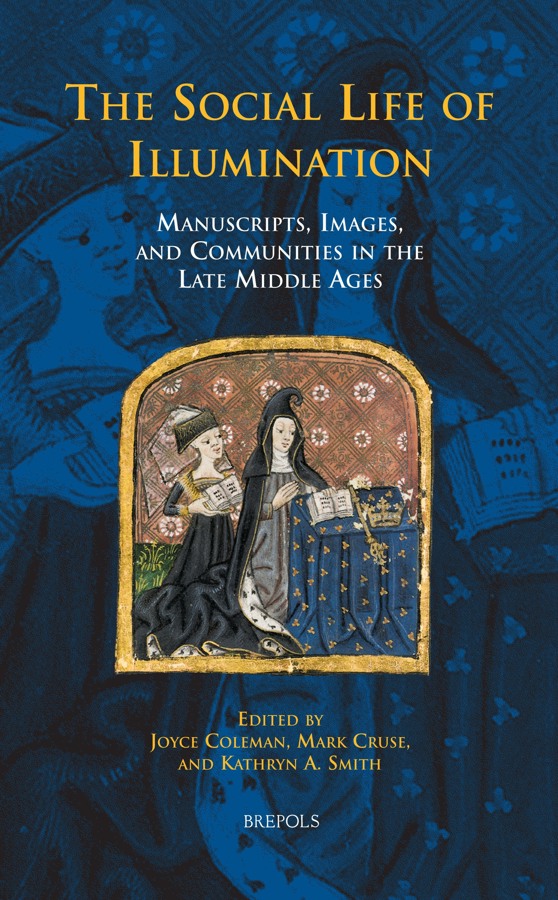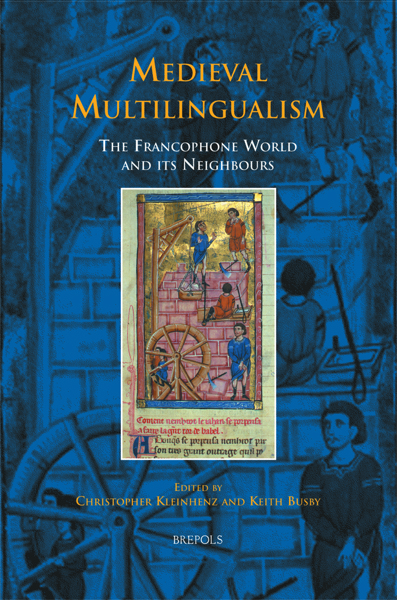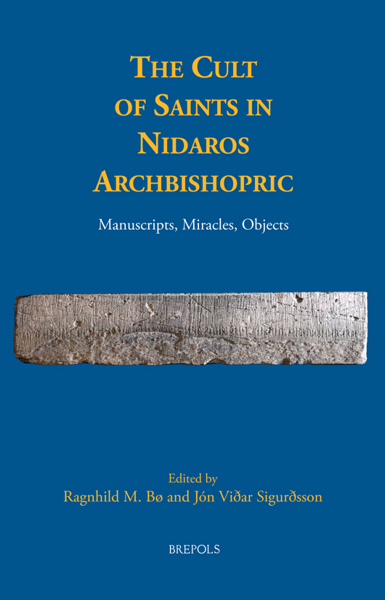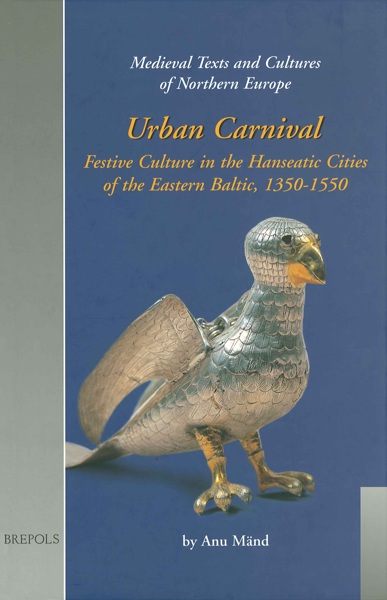
The Social Life of Illumination
Manuscripts, Images, and Communities in the Late Middle Ages
Joyce Coleman, Mark Cruse, Kathryn A. Smith (eds)
- Pages: xxiv + 552 p.
- Size:156 x 234 mm
- Illustrations:135 b/w, 9 col.
- Language(s):English
- Publication Year:2013
- € 155,00 EXCL. VAT RETAIL PRICE
- ISBN: 978-2-503-53212-7
- Hardback
- Available
Art historians and literary scholars explore how the interplay of images and texts in medieval manuscripts enabled an array of social interactions that helped to shape communal identities and experience.
"Each insightful essay contextualizes the visual within a literary and historical interpretation and provides a thoughtful yet clear assessment, accompanied by adequate illustrations to support arguments. (...) The Social Life of Illumination offers well-argued and well-written essays of interest to graduate students, teachers, and scholars and will be a valuable addition to university libraries. Because of its subject restriction to English and French illuminated manuscript, the essays can connect and interweave aspects of social history and iconography into political currents and events happening on both sides of the Channel. In this way, the book presents a greater consistency than is often found in edited volumes of articles." (Diane E. Booton in: H-France Review, Vol. 14 (October 2014), No. 159)
"This edited collection of essays provides a vivid and up-to-date examination of the "social life" of late medieval French and English illuminated manuscripts." (Amanda Luyster, in: The Medieval Review 14.10.29)
"In The Social Life of Illumination, art and literary historians examine French and English illuminated manuscripts produced between the thirteenth and early-sixteenth centuries. The volume's essays demonstrate that manuscript imagery expresses, instigates, and solidifies social interactions and relationships." (Sarah Bromberg, in: The Catholic Historical Review, Vol. 100, n° 4, Autumn 2014, p. 813-814)
"The volume presents an alternative approach to word and image, and will provide a useful point of reference for scholars interested in manuscript contents beyond text." (Rebecca Lyons in: Parergon, 31.2, 2014, p. 155-156)
"(...) The thematic strands that I have teased out here are only three of the possible ways in which this collection might be mined for insights into late medieval culture in northern Europe. Readers of the collection will surely find their own ways to profit productively from this wide-ranging collection of essays." (Gerald B. Guest, in: Studies in Iconography, 36, 2015, p. 171-174)
"La proposta interdisciplinare di questo volume, quindi, pur manifesta e dichiarata, e tuttavia caratterizzata da un taglio editoriale preciso e strutturato, essendo stati scelti l’iconografia e piu in generale il manoscritto quale luoghi che, attraverso l’iterazione fra testo e contesto della sua trasmissione, narrano il senso di identita dell’individuo in relazione alla comunita e alla societa in cui abita. La consapevolezza di questa scelta e assai utile al lettore non specialista, poiche rende chiaro e convincente il collegamento fra i contributi e la relazione fra le due sezioni del volume." (Cecilia Panti, in: Studi Medievali Serie terza, 57, 1, 2016, p. 384-387)
"Cet ouvrage nous semble donc un bel exemple de recueil autour d'un sujet donné. Même si celui-ci est large, les liens qui apparaissent au dil des articles mettent en lumière un aspect peu abordé des manuscrits enluminés." (Anne Dubois, dans: Le Moyen Français 75, 2014, p. 147-150)
“Studies like this, which truly get at the different ways of experiencing medieval manuscripts, putting us in the minds and bodies of our medieval predecessors, change our perceptions forever and lead us to form a completely different relationship with the manuscript codex. Bravo to the editors. Bravo to Brepols.” (Sandra Hindman, in Manuscripta, 60/1, 2016, p. 111)
« Par la multiplicité et la diversité des exemples analyses et par la richesse des pistes de recherche empruntées, ce volume apparait comme un ouvrage essentiel pour repenser la place et le rôle des enluminures au Moyen Age et, espérons-le, pour susciter de nouveaux questionnements chez tous ceux qui s’intéressent à ce type de production. » (Emilie Cottereau-Gabillet, dans Le Moyen Age, 122/2, 2016, p. 499)
“(…) each of the essays presented here makes a valuable (and well-illustrated) contribution to the study of later medieval illuminated manuscripts. This is a field in which much research remains to be done and the volume is a reminder of the value of close examination of these rich objects and the light that they can shed on the environments in which they were produced and used. (Laura Cleaver, in Óenach, 8/1, 2016, p. 11)
This anthology is the first broadly based exploration of an issue now emerging at the intersection of art history and literary study: how the interplay of images and texts in medieval manuscripts enabled an array of social interactions that helped shape individual and communal experience and identities. An interdisciplinary group of scholars, from Art History, English, and French departments, has combined to explore the ways in which pictures in a book can have a 'social life'. Setting aside the traditional assumption that illuminated manuscripts were meant chiefly for the eyes of solitary reader-viewers, the essays in this anthology demonstrate that illuminations took on social dimension in many ways. They could cue internal dialogues with religious figures or family members; they could be described, explained, and/or viewed communally during public readings; and they could draw their viewers into joint celebration of core secular or religious values. As much as architectural monuments, contracts, and rituals, illuminations provide a way for us to map the multiple dimensions of medieval social life.
Introduction: The Social Life of Illumination — JOYCE COLEMAN, MARK CRUSE, and KATHRYN A. SMITH
Part I. Spiritual Community
Thee Social Life of a Manuscript Metaphor: Christ’s Blood as Ink — MARLENE VILLALOBOS HENNESSY
Communion and Community: Eucharistic Narratives and their Audience in the Smitheld Decretals — ALIXE BOVEY
Worded and Wordless Images: Biblical Narratives in the Psalters of Humphrey de Bohun — LUCY FREEMAN SANDLER
A ‘Viewing Community’ in Fourteenth-Century England — KATHRYN A. SMITH
Jean Germain’s Debat du Crestien et du Sarrasin: Illumination Between Multi-Confessional Debate and Anti-Conciliarism — DAVID JOSEPH WRISLEY
‘Ces mots icy verrez juer’: Performative Presence and Social Life in the Arras Passion Manuscript — ROBERT L. A. CLARK and PAMELA SHEINGORN
Anthoine Vérard’s Illuminated Playscript of La vengeance nostre seigneur: Marketing Plays and Creating the King’s Image — LAURA WEIGERT
Part II. Social and Political Community
Visualizing Morality in the Manuscripts of Marie de France’s Isopet — LOGAN E. WHALEN
Angels on the Right Bank: The Celestial Ladder over Paris in BnF, MS fr. 146 — NANCY FREEMAN REGALADO
Performing Documents and Documenting Performance in the Procès de Robert d’Artois (BnF, MS fr. 18437) and Charles V’s Grandes chroniques deFrance (BnF, MS fr. 2813) — ANNE D. HEDEMAN
Pictorial Polyphony: Image, Voice, and Social Life in the Romand’Alexandre (Oxford, Bodleian Library, MS Bodley 264) — MARK CRUSE
The First Presentation Miniature in an English-Language Manuscript — JOYCE COLEMAN
From Print to Script: The Luxury Metatext of Lambeth Palace Library, MS 265 — DHIRA B. MAHONEY
To Have and to Hold: Marriage, Politics, and Iconography in the Prayer Book of Margaret Tudor — ELIZABETH MORRISON
The Book of Hours as album amicorum: Jane Guildford’s Book — MARY ERLER
Index of Manuscripts, Early Printed Books, and Archival Sources
General Index
